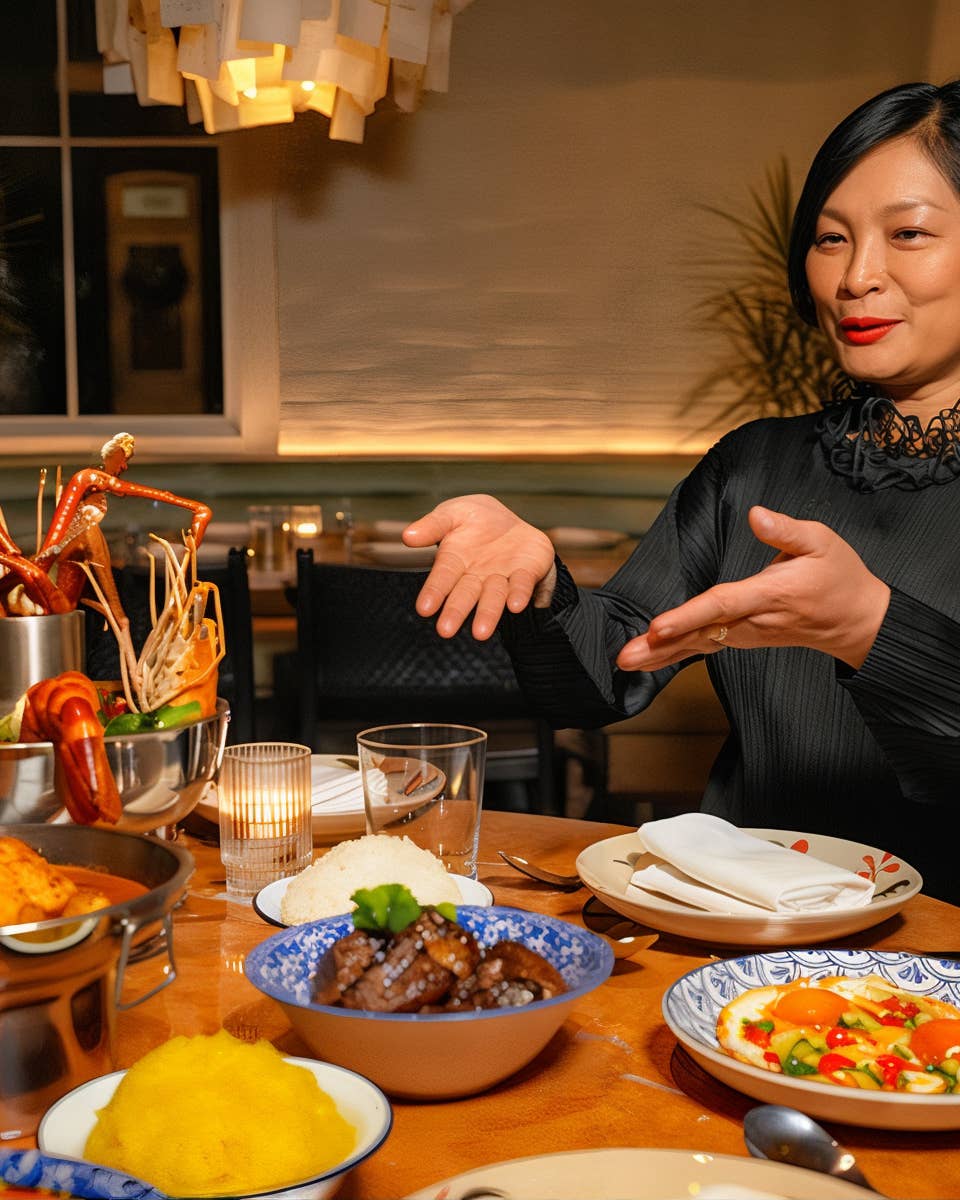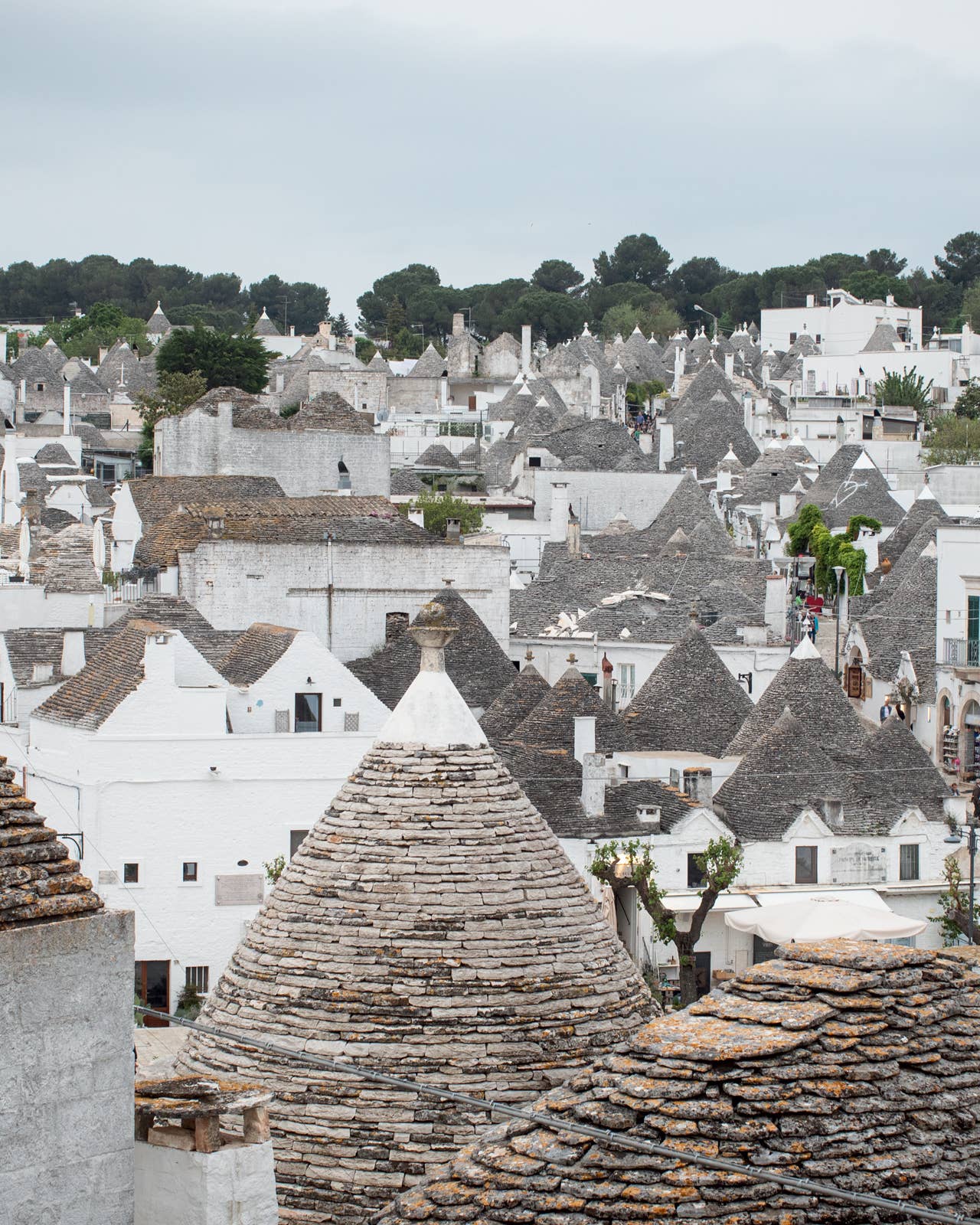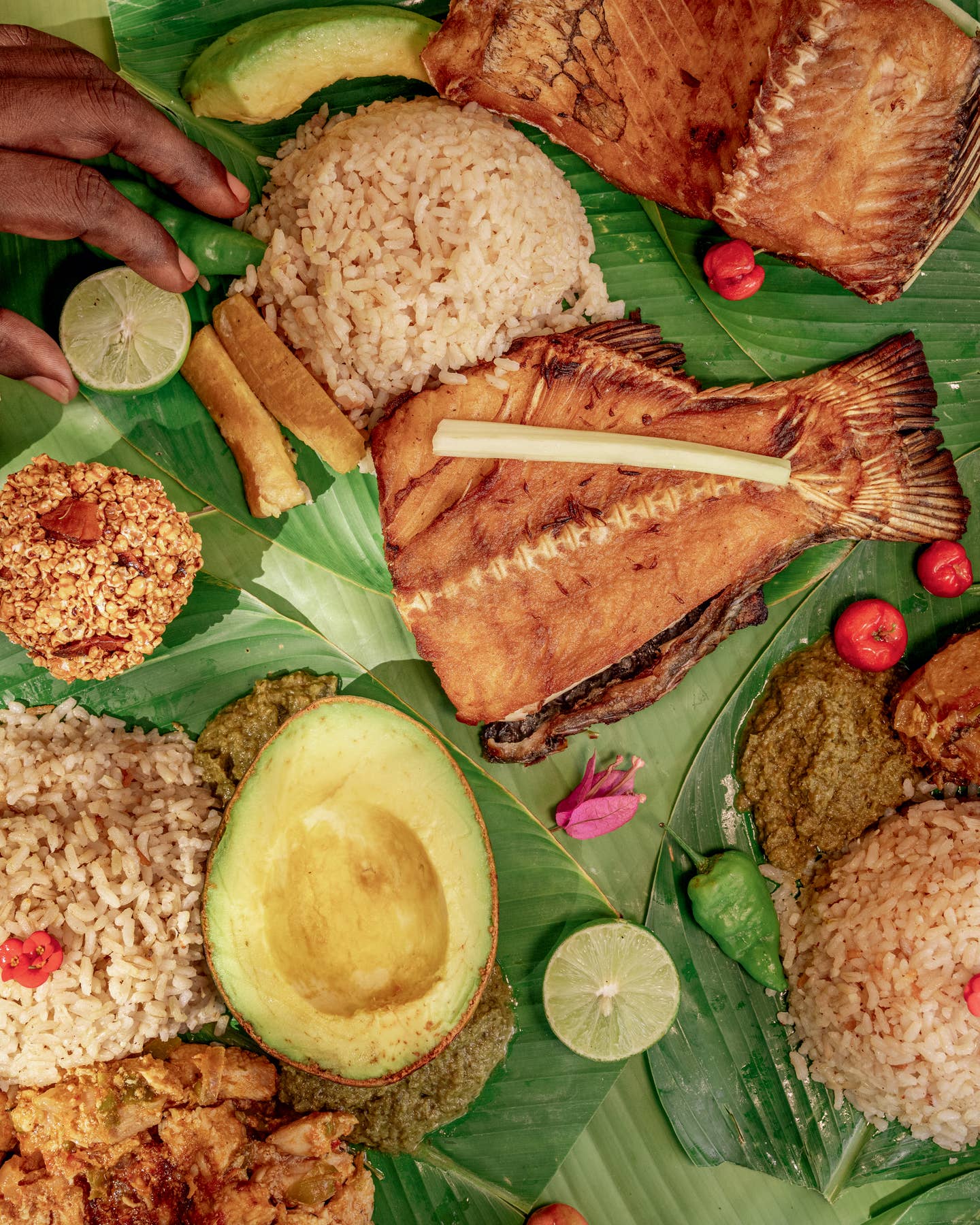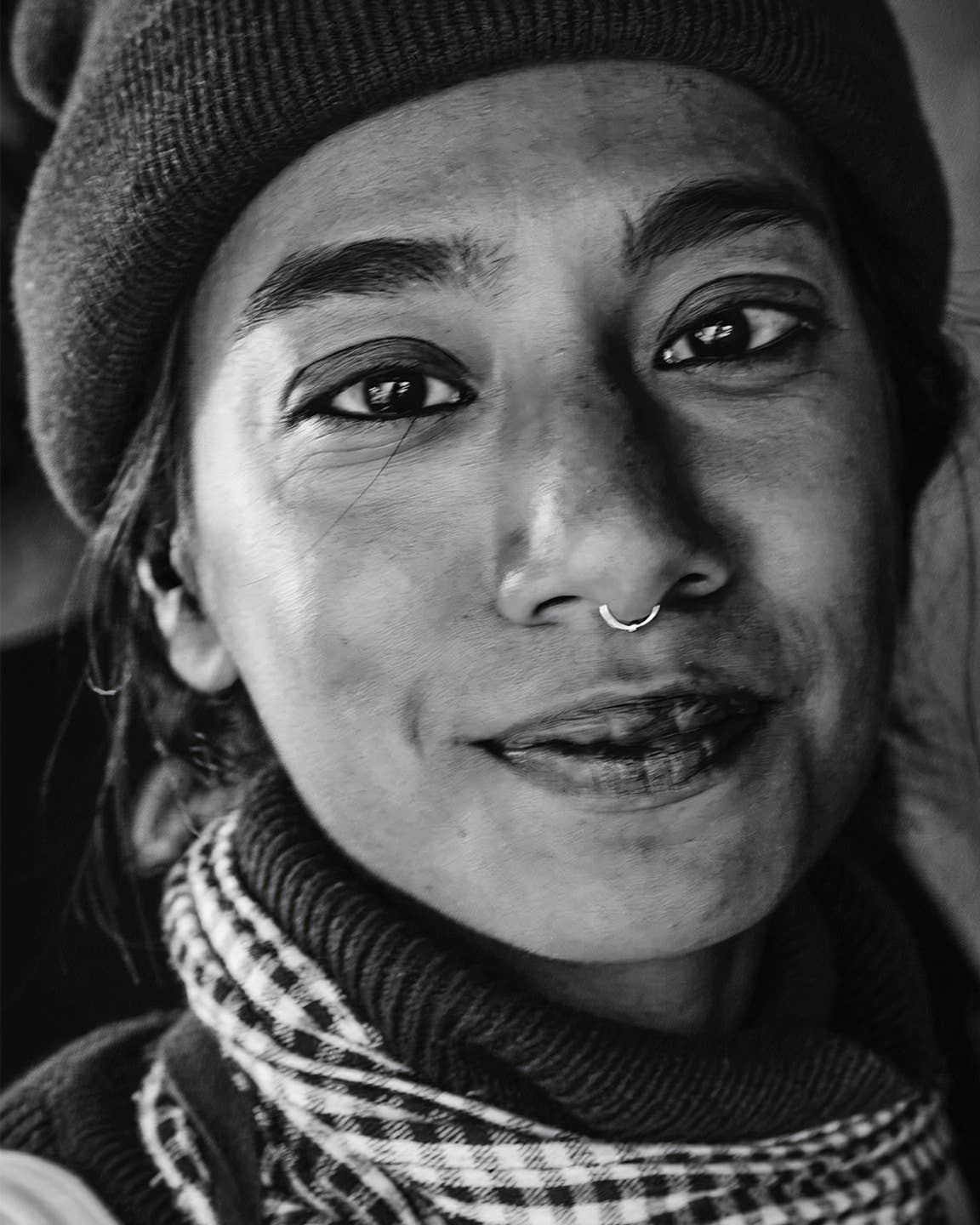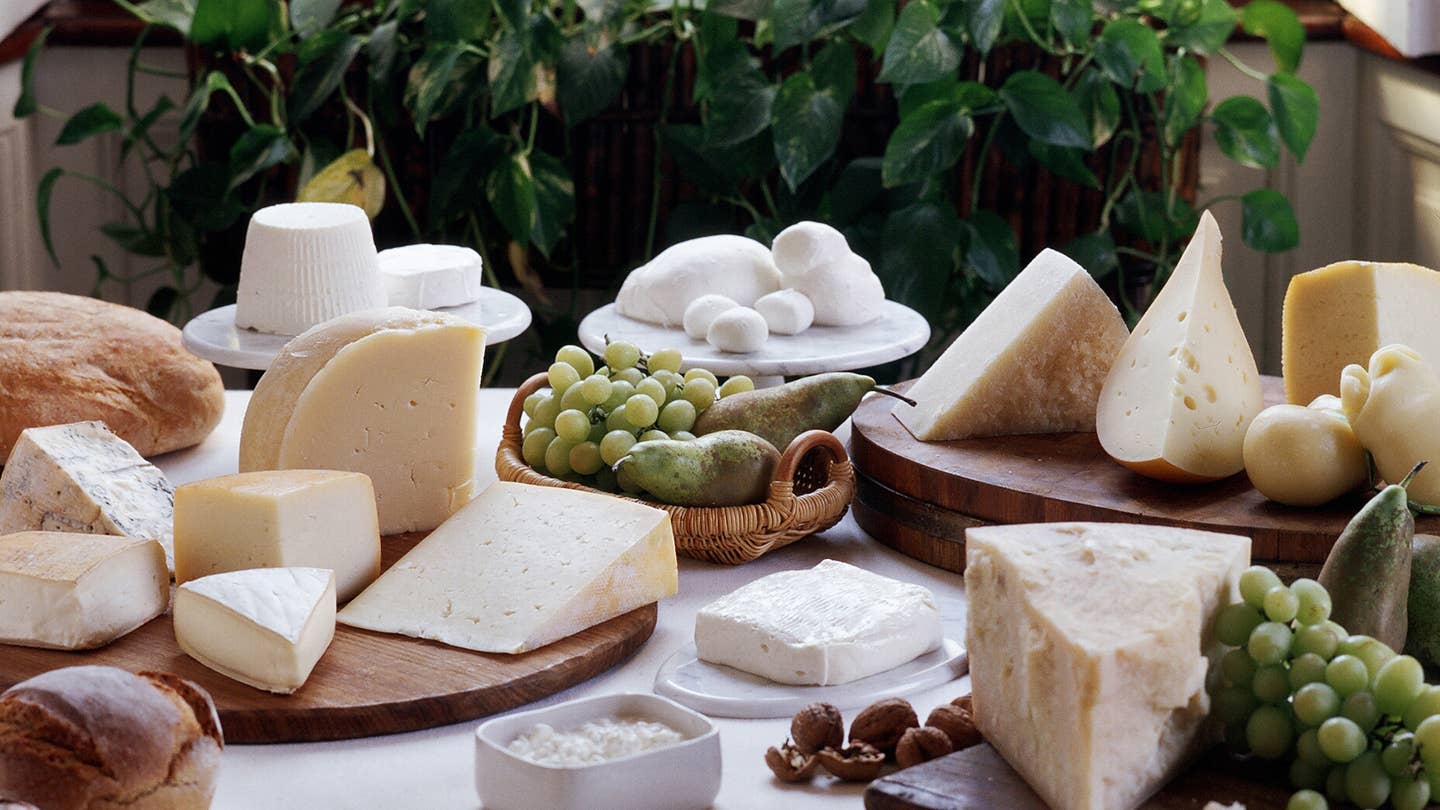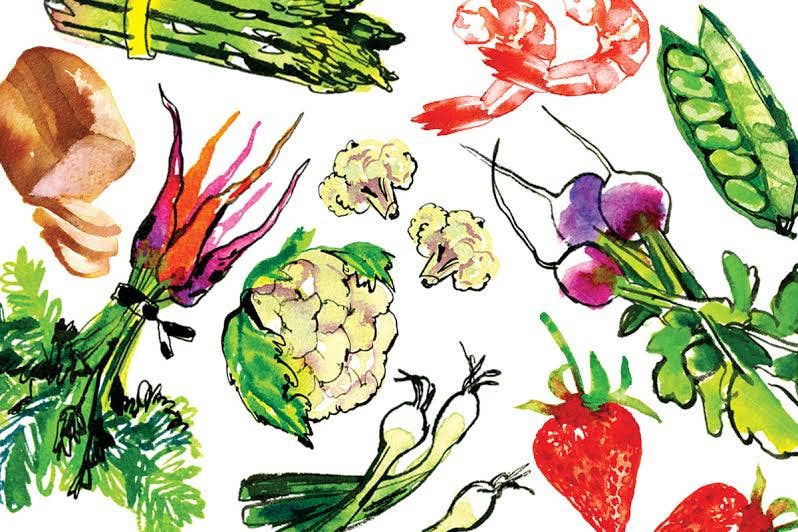
Provençal Contemporary
Provence is another country—beautiful, sensuous, mythic, dreamed of, feverishly desired. Provence is also a cliche, an all-too-often-hollow catchphrase employed to sell, and lend the herbal scent of authenticity to, everything from flowerpots to fabrics to contrived and inharmonious culinary creations that would have about as much resonance for the average citizen of the region as sushi or shoofly pie.
The native cooking of Provence, in fact, has almost nothing to do with the supposedly "Mediterranean" dishes so frequently given a spuriously Provençal provenance on American (and, for that matter, French) restaurant menus these days. Traditional Provençal cuisine is modest, rustic, not inconsiderably repetitious—a cuisine of peasant subterfuge, based on the ingenious extension of meager resources, and on things dried and brined and oil-packed, both for preservation and to intensify their flavors so that a little goes a long way. It is not, in other words, the grilled, herb-sprinkled beach food of popular conception; it's solid, hearty, inland stuff, designed as sustenance for what Frederic Mistral, the great poet of Provence, once called "a cold country with a hot sun".
Yet out of Provence, a region whose own cuisine is so dramatically less varied and refined than that of eminently gastronomic Burgundy or gastronomically extravagant Alsace, has come some of the best and most sophisticated French cooking of the modern era—perhaps precisely because there was not a highly evolved culinary tradition already in place. The legendary Escoffier, who was not only a great chef himself but who both codified and revolutionized classical French cuisine, was born in Provence and got his professional start there. It was in Provence that contemporary culinary pioneers like Roger Verge, Louis Outhier, and Jo Rostang thrived—and in Provence (and on its immediate borders) that the now-international Relais & Chateaux group of premium restaurants and inns was founded. Today, with such noted chefs as Alain Ducasse in Monaco and Moustiers-Sainte-Marie, Jacques Maximin in Venice, Jacques Chibois in Grasse, Alain Ryon in Cuers, Reine Sammut in Lourmarin, Christian Morisset in Juan-les-Pins, and Franck Cerutti in Monaco and Nice, among others, there are nearly 50 Michelin stars between the Rhone and the Var, from Montelimar south to the Mediterranean—and half a dozen more in the extended Provence between the Var and the Italian border.
"Whether it is because of the mild climate of this land of flowers and fragrance or because of the origins of her people—Celtic, Greek, Latin, with a touch of Arabian—I cannot say," wrote French food writer Austin de Croze nearly 70 years ago, "but Provence is, first of all, a land of imagination." We've found this to be true time and again as we've visited the restaurants of Provence, famous and less so, in recent years—and we've discovered that it's not only the region's celebrity cuisiniers who are fashioning contemporary masterpieces from local clay. Imagination, in fact, is rampant.
Three lesser-known chefs have particularly impressed us—two who have only recently come into their own and a third who has been cooking wonderful food for two decades in undeserved semiobscurity. The three are very different from one another in style, but all produce updated Provençal cooking that is not only imaginative but also intelligently conceived—and unfailingly delicious. It is some of the best new food being crafted today not just in Provence but in all of France.
Eight or nine miles southeast of Avignon, at the western end of Provence, on an old estate that was once the headquarters of a sect of schismatic Catholics from the Atlantic side of France, stands the 42-year-old Auberge de Noves—a stone building giving onto a paradisaical terrace overlooking woods and distant wooded hills, shaded by spreading plane trees, and framed by a wonderment of flowers. When Robert and Suzanne Lalleman happened upon the place in 1954, recalls their son Andre, "It was in a desperate state." At the time, the Lallemans were the proprietors of La Petite Auberge, a well-regarded restaurant in nearby Sauveterre, but were looking for a new location where they could add guest accommodations to the dining room. They thought this estate had possibilities. "My parents started renovating slowly," says Andre—today a suave, professionally charming gentleman with a thick white mustache and a ready smile. "And we're not quite finished yet," he jokes.
Andre took over management of the place from his parents "in 1969 officiously and in 1972 officially", and now runs it with his wife, Jacqueline. Their own son, another Robert, is now in charge of the kitchen, and the food is confident, sophisticated, and unmistakably Provençal. Robert, a good-looking, earnest, rangy young man apprenticed in the Auberge kitchen as a teenager, but left after two years—"Because," he says, "like every other young man, I didn't get along very well with my father." He went on to work at a succession of top restaurants—among them Hiely-Lucullus in nearby Avignon, L'Escale in Carry-le-Rouet, and a trio of three-star gastronomic temples, Alain Chapel, Troisgros, and Pic—returning home in the early '90s. Today, says his father, "We cope not too badly. I think Robert realizes now that people come back to a place like this not only for the quality of the food or rooms but for the memories."
Robert echoes the sentiment. "People want everything—food, service, and _accueil _[a term which might be translated here as "the way in which one is welcomed and made to feel at home"]—to be on the same level. I'm not sure that just what's on the plate is sufficient." Nevertheless, just what's on the plate here is very good indeed. Robert's menu includes the luxury dishes that a hotel-restaurant of this caliber probably has to have—the smoked salmon, foie gras, and lobster—but it is otherwise rich with the flavors of the region, combined in resourceful ways.
Andre marks certain things on the menu as "musts"—"a queer idea of mine," he explains, "to emphasize that they are Robert's dishes, a joking way to say I want people to try them." One brilliant appetizer, which Andre has dubbed a "Must des Must", is his son's souffle d'ail doux et pignons de pins sur des escargots "petits gris de Provence". This translates to an ethereally light custard of young, sweet garlic on a crust of paper-thin galette—like a dessert tuile—studded with pine nuts, on a bed of exquisite little Provençal snails fricasseed with shallots and spinach. "Some dishes come to you 'like that', the first time," says Robert, "but I worked on this for a long time." Other vivid creations of his include various kinds of raw fish marinated with orange juice and vinegar—a sort of Provençal seviche; asparagus grown near the Auberge, served with a pleasantly acidic sabayon of olive oil, reduced vinegar, and white wine; turbot with half-dried tomatoes; and a perfect roast chicken for two, generously flavored with garlic and cumin.
Then there's the extraordinary canard en croute d'herbes et de sel, coriandre, et miel d'acacia. Robert lightly roasts a succulent Challans duck, then lets it rest overnight. The next day, he seals it in a crust of salt pastry with cilantro, rosemary, thyme, and pepper, and bakes it until the breast is done. This he then carves into long, thin aiguillettes and moistens with a reduction of white wine with shallots, duck juices, and acacia honey, which gives the duck an elusively exotic savor. (One can imagine a dish like this being created for some medieval Provençal count as a way of showing off novel ingredients.) The duck legs are then returned to the kitchen, roasted again to crispness, and presented with a small salad—sheer luxury.
"All the things I learned in other restaurants," says Robert, "I transformed when I came back here, to use local products and develop stronger flavors. When people eat in Provence, they expect strong flavors. This is not Paris or Burgundy."
If Noves is westernmost Provence, Cagnes-sur-Mer is at the region's eastern limits—at least according to the old definition, by which Provence ended at the Var River, where the Comte de Nice (whose alliances were Italianate rather than Provençal) began. Rising above Cagnes itself is the medieval hillside village of Haut-de-Cagnes. Renoir, Modigliani, and Soutine, among other artists, once lived and worked in this postcard-pretty settlement, with its tortuous cobbled streets, ancient hewn-stone walls, sun-bleached terra-cotta tiles, and ubiquitous bougainvillea—and in 1920, a Russian countess and her painter husband bought a building that had been a dependency of the adjacent 13th-century Cagnes chateau and turned it into a hotel-restaurant. In 1960, a young chef named Felix Barel and his wife, Mauricette, took it over and created the delightful hideaway now called Le Cagnard. (The Barels are still in evidence, though the establishment is now run by their crisply businesslike daughter Françoise Laroche.)
The interior of Le Cagnard plays to its medieval past, with its exposed beams and artfully faded frescoes illuminated by dim yellowish light. The main dining room, though, is one of the brightest and most beautiful on the coast, with a decorative ceiling that slides back fully half the length of the room and vast windows at one end giving onto a small but exquisite geranium-lined terrace overlooking masses of trees and tile-roofed villas, with the Mediterranean shining in the distance.
It is something of a mystery that Jean-Yves Johany—the man who cooks the food served in this dining room and on this terrace—is not better known. An almost roguishly handsome man (put him in a dinner jacket and he could fleece heiresses in Monte Carlo), born in the Auvergnat town of St-Flo, Johany arrived on the Cote d'Azur in 1971, cooking at three of the region's most celebrated establishments—La Reserve in Beaulieu, the Eden Roc in Cap d'Antibes, and La Bonne Auberge in Antibes. Since 1979, he has been quietly preparing light, pure-flavored, elegant (but not fussy) food at Le Cagnard, to what seems like very little acclaim. "We're not too loved by the French critics here," Johany shrugs. "I don't know why."
Neither do I. Johany's presse de rouget aux tomates et poivrons seches (a kind of unbound terrine of tiny red mullet filets with dripping-ripe tomatoes and dried sweet peppers), mushroom-stuffed squid with lobster sauce, borage-filled ravioli in a chicken-stock reduction perfumed with sage, and poached veal loin with an herb and olive vinaigrette are contemporary Provençal cooking at its best—and a dish of sweetbreads and black truffles atop a perfect, parmigiano-flavored risotto I devoured at Le Cagnard one winter remains in my memory as perhaps the best sweetbread preparation I've ever had.
"I love the flavors of Provence," says Johany. "The vegetables, the herbs, the olive oil. I have a theory that in other regions, in the north, because it's colder, people eat richer foods. With all the sun here, they're content with less. The flavors may be vivid but the food is lighter—which is how diners here seem to want it, not because they're told to, but because it seems right. More than anything, I look for simplicity. I think cuisine must be simple. But it is very difficult to be simple in cuisine."
If Provence is another country, the Île de Porquerolles is another world. This tiny, verdant piece of land just off the Provençal coast near Hyeres, about a dozen miles east of Toulon and 50 southeast of Marseille, is an unexpected Eden of dirt roads and rock beaches, thick with stands of Aleppo pines, eucalyptus, live oak, plane trees, and palms, accented everywhere by purple pelargoniums, fuchsia-hued bougainvillea, fragrant bushes of mock orange. In the middle of the island, by the port, is a small town, built about a broad square ringed with eucalyptus inside a perimeter of cafes, shops, and modest hotels. There is a stark-looking church on one side and a ruined castle on the hill behind; at first glance, the scene suggests Mexico more than France. On one end of the Île de Porquerolles is Le Mas du Langoustier, whose history is tied closely to that of the island.
Where this low-key but polished hotel-restaurant stands, there was once a factory, built in 1840 for the manufacture of soda ash from algae. Late in the century, the factory was razed—but not before the vapors it produced had burned off all the surrounding vegetation. In the early 1900s, a Belgian businessman named François-Joseph Fournier bought the island as a wedding present for his Scottish bride, Sylvia. It was she who opened a hotel where the factory had been, in 1931. The current proprietors of the hotel, which is now much enlarged and prettified—with rose-colored walls trimmed in pale ice blue and white, olive trees growing through the dining room ceiling, and the surrounding vegetation very much revived—are Marie Caroline Le Ber, who is Sylvia's granddaughter, and her husband, Georges Richard.
The Richards—a pleasant, attentive couple who don't seem in the least bit jaded by their extraordinary surroundings—seem to like few things more than showing off the cooking of their young chef, Joel Guillet. Burgundian by birth, Guillet apprenticed at Maxim's in Paris and at Le Cerf in Marlenheim. Drawn to Provence, he worked with Dominique Le Stanc first at Chateau Eza in Èze and then at Chantecler in the Hotel Negresco in Nice (where Le Stanc took over from Jacques Maximin). Since 1994, he has been been in charge of the kitchen at Le Mas du Langoustier.
Working on an island has its advantages and disadvantages, says Guillet. "To begin with, if the weather is bad, nobody comes." (Access to the island is by a 20-minute ferry ride or a considerably shorter water-taxi jaunt.) He also works nonstop, seven days and nights a week for six months, and five days a week for two—cooking, training staff, and developing new recipes. But then he gets four months off, which he spends on the island—relaxing, fishing, and harvesting mushrooms, he says.
Guillet seems to draw even more than Lalleman and Johany, if possible, from the vocabulary of Provençal cooking—garlic, olive oil, basil, rosemary, sage, licorice, saffron, tomatoes, eggplant, artichokes, fennel, and olives; escabeche, panisses, mesclun, soupe de poisson, tapenade. His gateau d'ail violet confit avec jus de persil et champignons des bois makes an illustrative comparison with Lalleman's garlic souffle at the Auberge de Noves. Both are excellent, and both are redolent of Provence, but Lalleman's is an adaptation and combination of classic elements—the lighter-than-air souffle, the tuile, the shallot-based sauce—while Guillet's is an original, constructed of garlic itself rather than garlic-scented eggs, faintly bitter but also sweet and savory, and uncompromising in its pungency; this is not society garlic.
In other dishes, Guillet surrounds classic brandade (salt cod pureed with olive oil) with sweet tiny clams in their own juices; he mixes flavors and textures with high-wire bravura by combining very tender island octopus (the secret, he says, is leaving it in the freezer overnight) in a kind of salad with pureed artichoke hearts, raw baby spinach leaves, and deep-fried periwinkles; he stuffs dorade (sea bream) with tomatoes, leeks, and niçoise olives, grills it perfectly, then sauces it with a beurre blanc lightly flavored with the juices from a ratatouille; he cloaks plump little pigeons in a startling but successful sauce based on eucalyptus honey (from local trees) and licorice; he redefines steak au poivre by skewering pieces of filet on rosemary branches, grilling them, then serving them in black pepper sauce with crushed (not silky pureed) potatoes.
All these preparations display Guillet's masterly ability to integrate his ingredients into finished dishes without submerging their identity, and to use vivid flavors not for shock value but as accents and illuminations. And that's as good a definition as any I can think of for contemporary Provençal cuisine.
Keep Reading
Continue to Next Story





